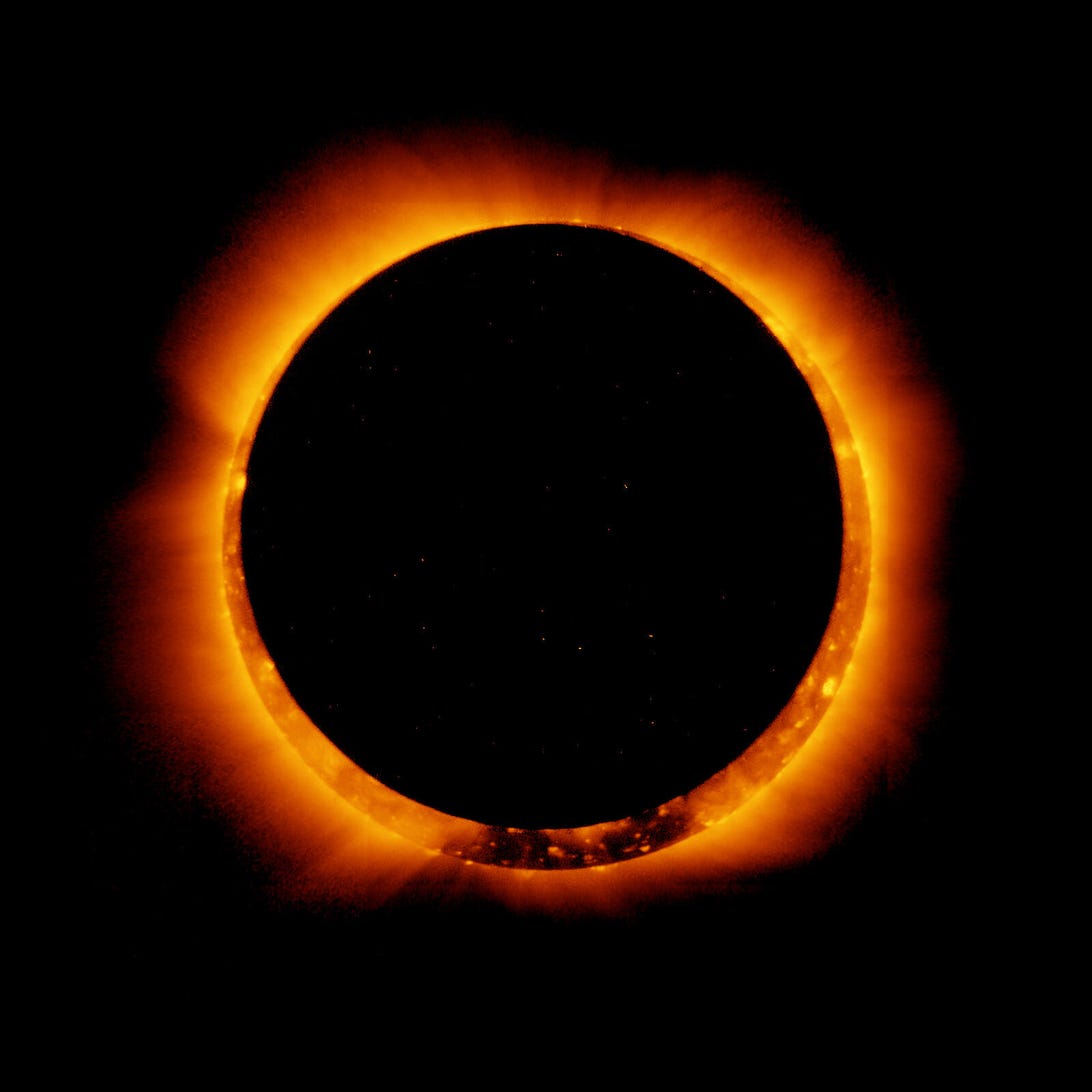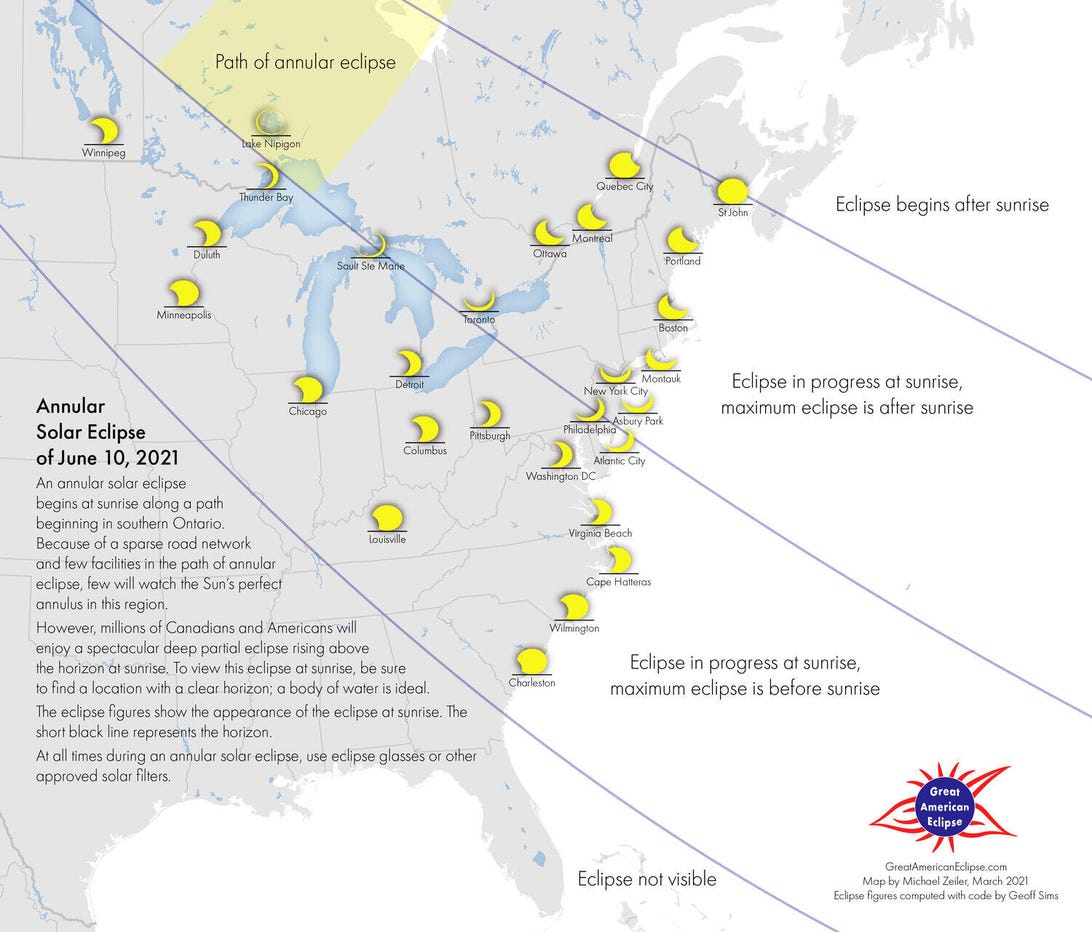
An annular solar eclipse in 2011.
NASAOn the morning of June 10, the darkened new moon will slide in front of the sun, resulting in a partial solar eclipse that will be visible from big swaths of North America and Europe. Some very lucky sky watchers in a narrow section of Canada and Siberia will have an opportunity to see the most dramatic part of the show, the "ring of fire" effect that comes from the moon covering all but the edges of the sun.
The scientific name for this is an annular solar eclipse, which is a little different from a total solar eclipse -- when the moon is at the right distance from Earth to completely cover the sun. A total solar eclipse put on a big show in North America in 2017, and we'll get another one in 2024.
The path of the Eye of Sauron-like phenomenon is called the path of annularity, and in this instance it passes over some very remote and uninhabited areas, including northern Canada, Greenland and the frickin' North Pole. Add COVID travel restrictions on top of everything, and the actual ring of fire is likely to be witnessed by very few people.
Your best shot at this point might be to drop some coin or otherwise try to finagle your way on to Sky and Telescope Magazine's chartered flight from Minnesota to view the eclipse from the air.
The good news for millions of others is that a partial eclipse will still be visible for a period of time from northern and eastern stretches of North America and much of Europe. The below animation from NASA provides a good approximation of what will be visible from when and where. The large shadow over the globe denotes the day side from the night side, while the lighter, secondary shadow is where and when a partial eclipse will be visible. The path of annularity is represented by the small red area.
The path of the June 10 annular solar eclipse.
NASAAnother rare aspect of this eclipse is that it will be happening close to sunrise at many locations. This means that with a nice, flat horizon to the east, like on a waterfront, the sun may appear to have horns as it rises rather than its usual curved disc.
"Good places to see this phenomena are around Thunder Bay, Sault Ste Marie, Toronto, Philadelphia, New York City, and Atlantic City," explains Michael Zeiler of GreatAmericanEclipse.com. "Other places will see the rising Sun appear as a shark's fin, such as Ottawa, Montreal, and Boston."

Where to watch in North America.
Michael Zeiler, GreatAmericanEclipse.comRemember, never look directly at the sun without proper eye protection, even (especially) during an eclipse. That's still a blinding ball of fire up there.
The American Astronomical Society has this authoritative guide on safely viewing an eclipse using a filter or viewer, or the old pinhole projection method.
For the vast majority of us who won't be able to make it to the path of annularity this time, make plans to head for the western US on October 14, 2023, when the ring of fire will appear again.
Follow CNET's 2021 Space Calendar to stay up to date with all the latest space news this year. You can even add it to your own Google Calendar.
Article From & Read More ( First solar eclipse of 2021 will show off a 'ring of fire' in the sky - CNET )https://ift.tt/3cehaGh
Science
No comments:
Post a Comment